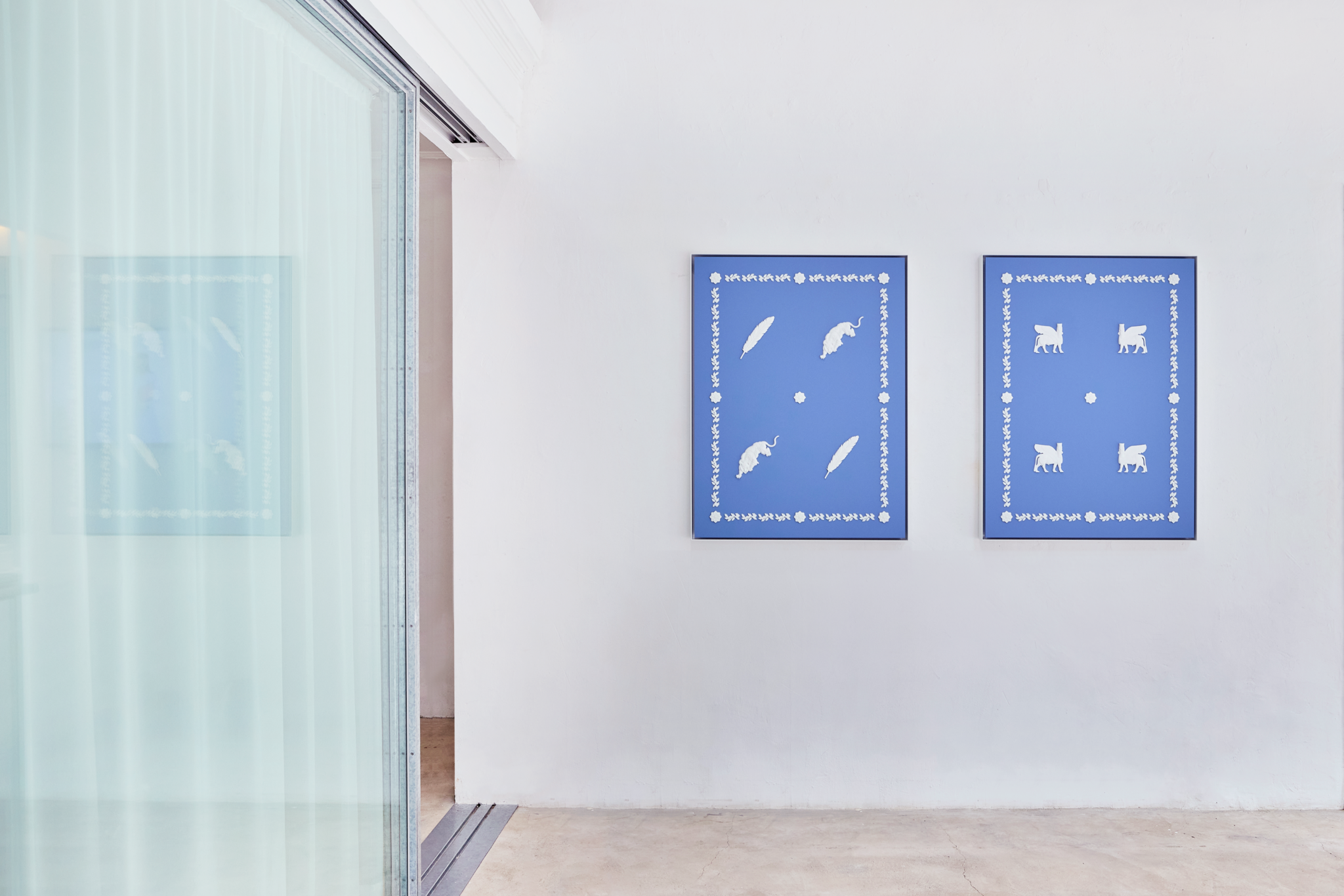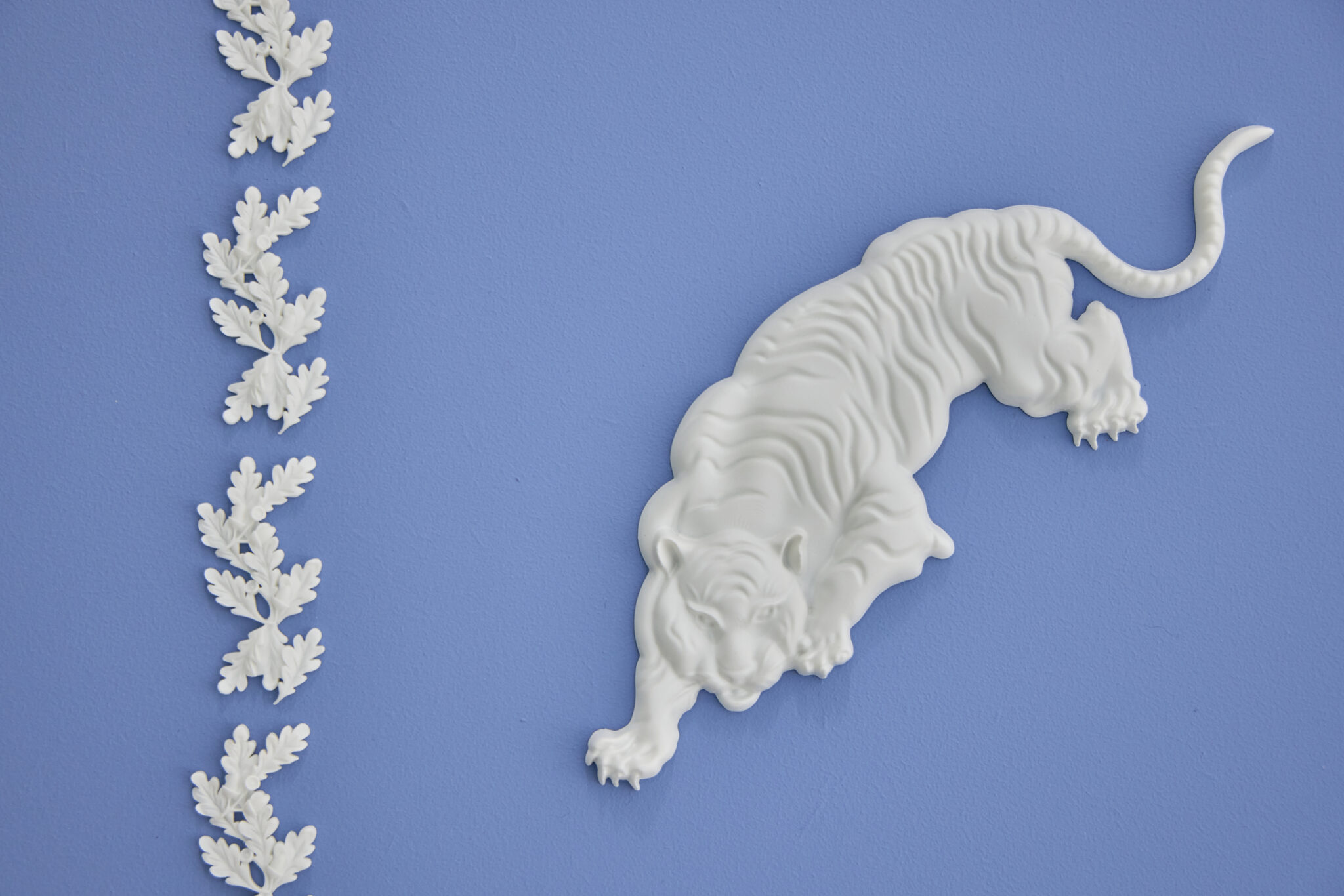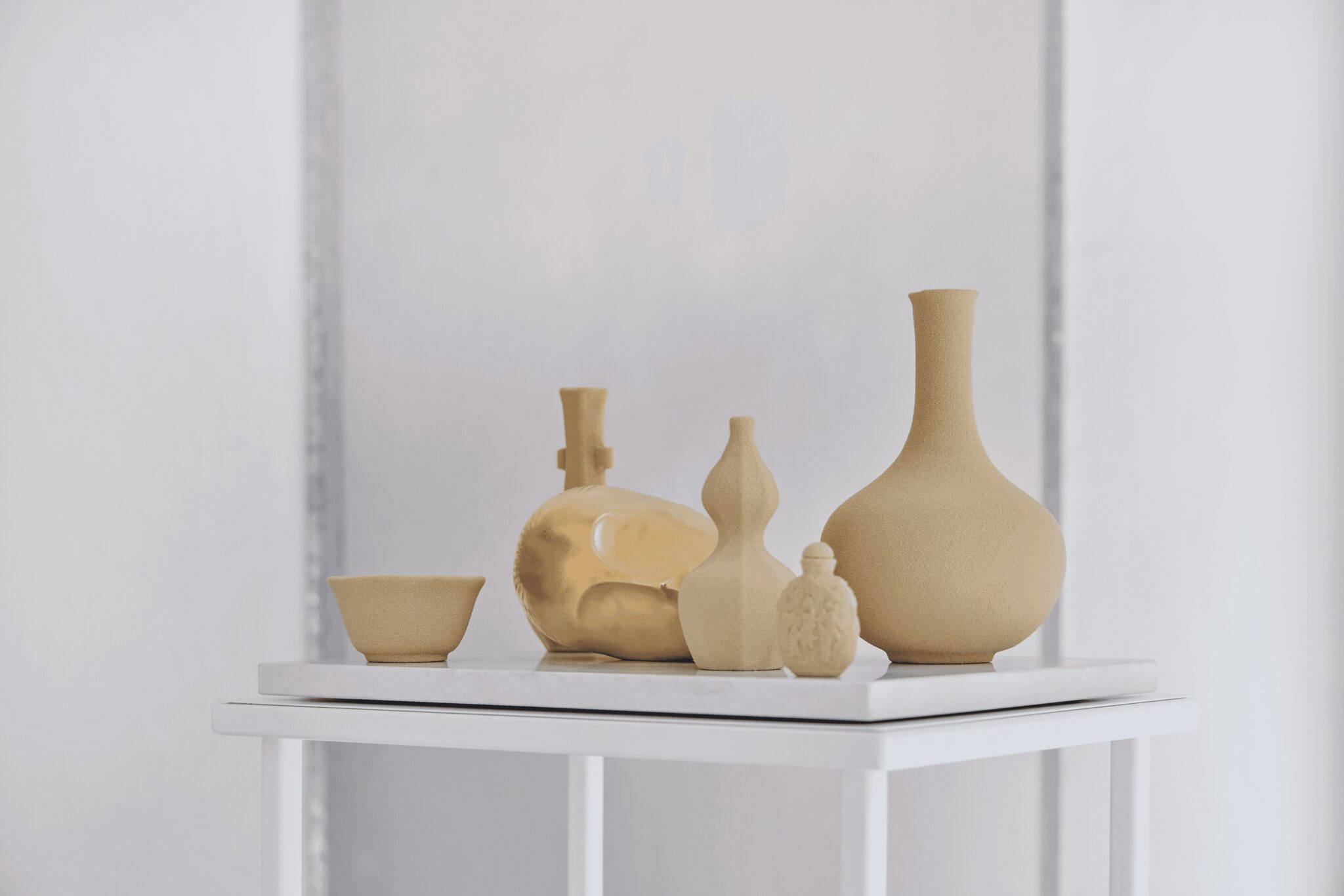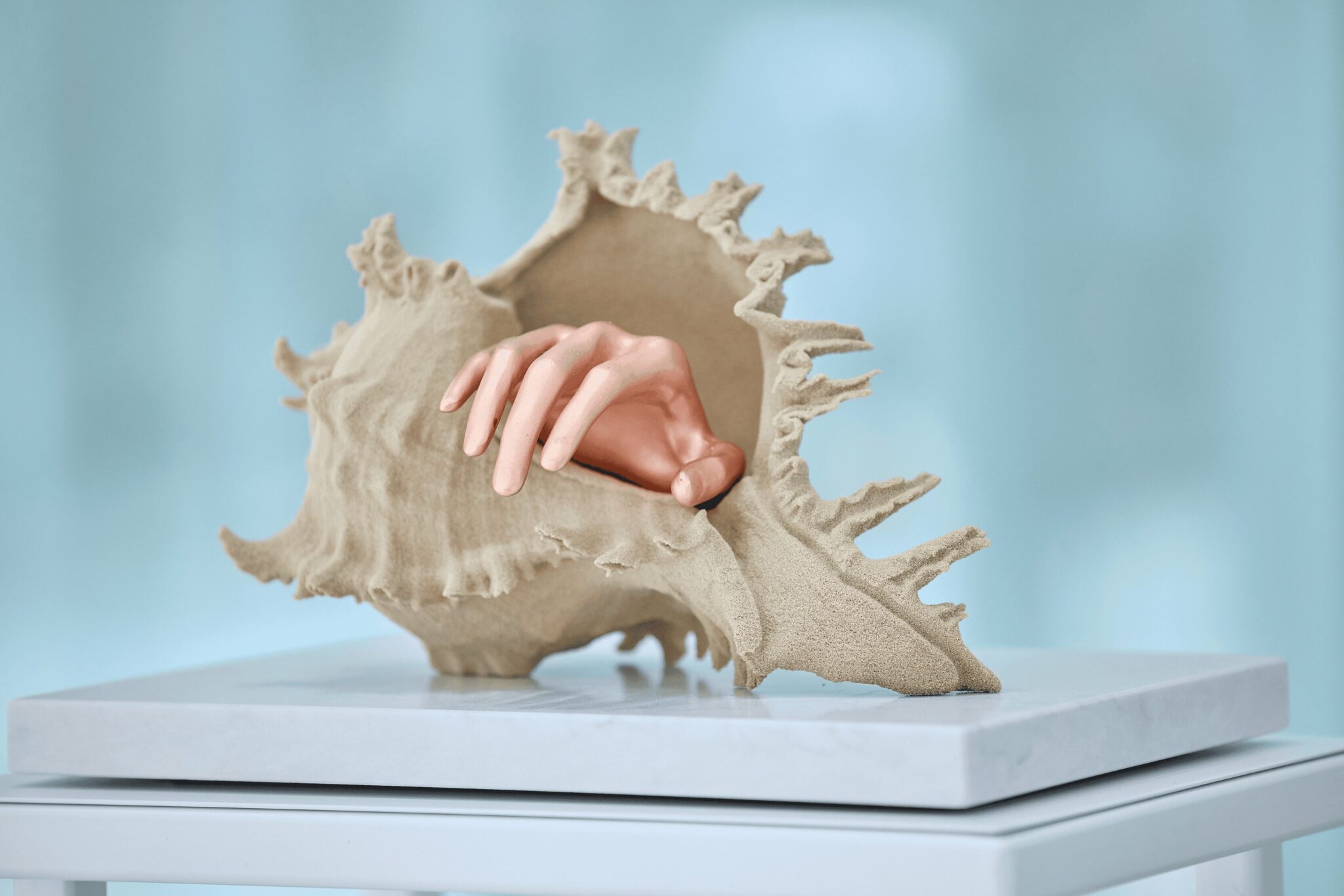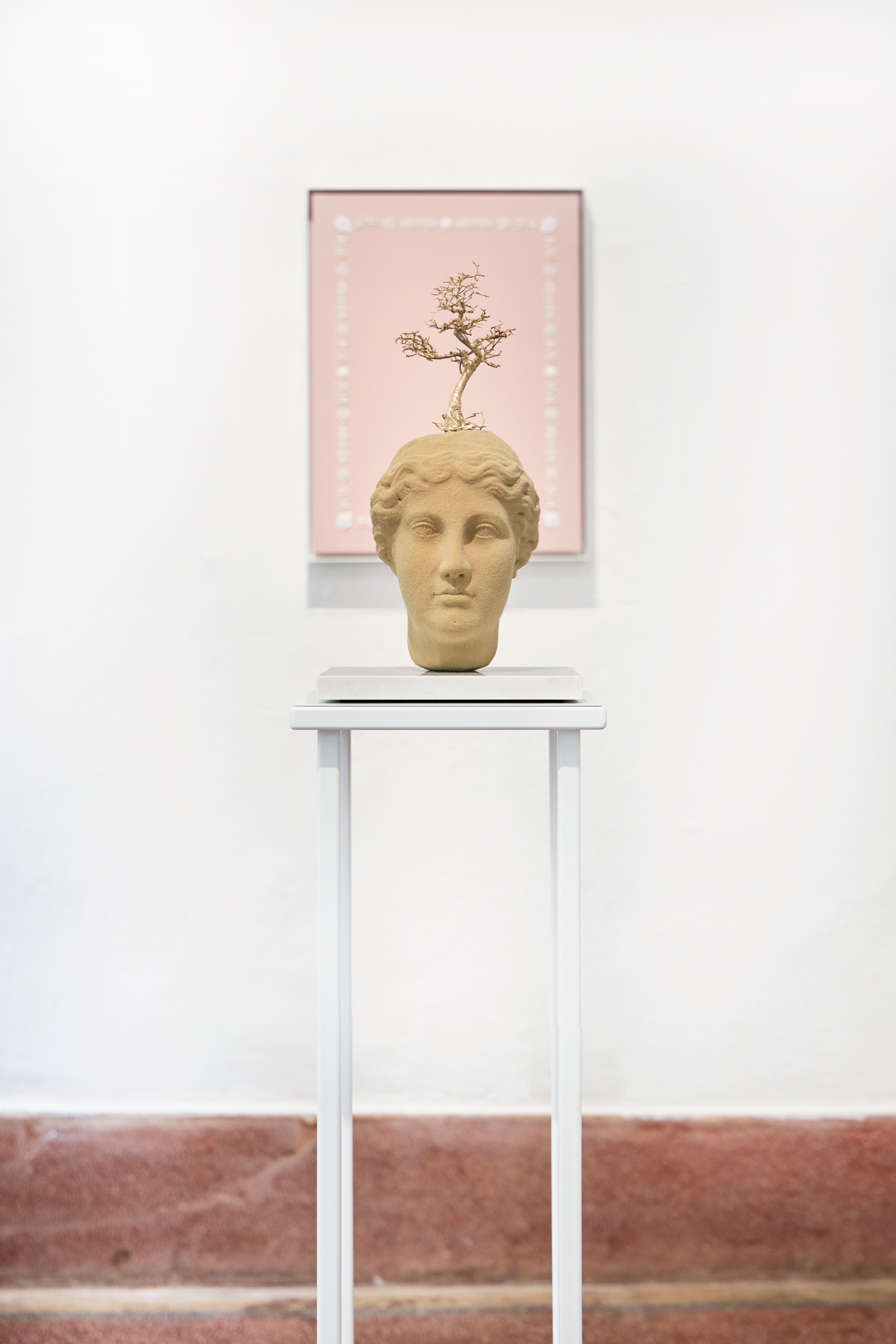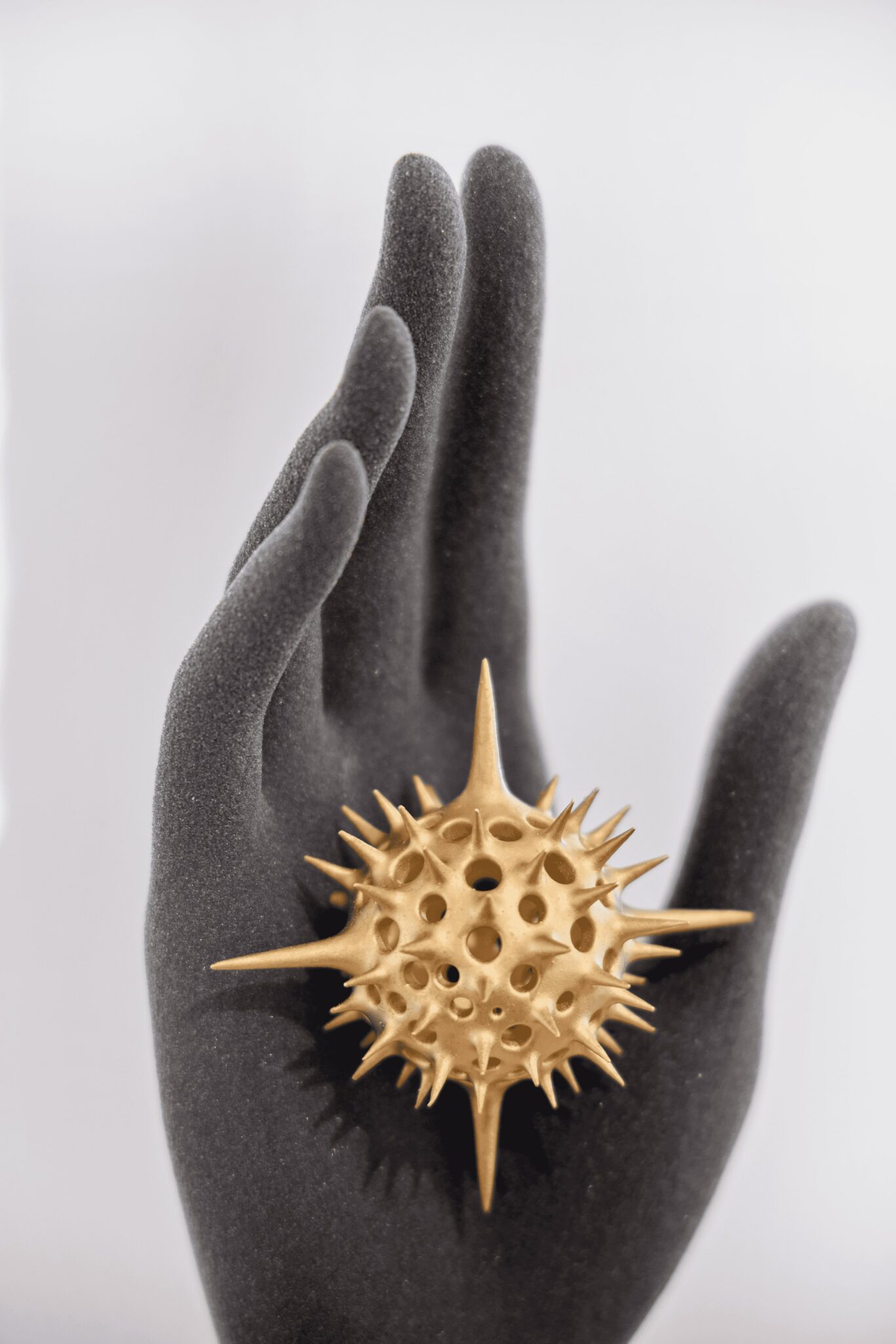The Last Days of Spring
THE SHOPHOUSE is pleased to present the first solo exhibition in Asia by Victor Lim Seaward. Taking its title from a melancholic poem by the Song Dynasty poet Li Qingzhao, the show presents new sculptures and wall-based works, which continue the artist's investigations into authorship, commodity, and the fluid nature of time and permanence.
Materiality and technological manufacture are key tenets of Lim Seaward's practice, and this is manifest in a set of six new floor based sculptures. They feature heads and hands taken from 3D scans of artworks from some of the world's most famous museums: the British Museum, the Louvre, and the Metropolitan Museum of art. These are in turn 3D printed in quartz sand in a new process called binder jetting, whereby particles of sand are fused together to create complex forms. The quartz sand elements are complemented by 3D printed resin elements which have been electroplated in precious metals: gold, copper, and tarnished silver.
These sculptures are composed of 3D scans of real world objects ranging from antiquity to modernity: a Roman head from 10 BC with a dead bonsai tree on top, an ancient Greek head with a rose protruding from an ear, Brancusi's Sleeping Muse surrounded by ancient Chinese vessels from the British museum, a Roman hand holding a radiolaria, a shell with a Baroque hand protruding, and another holding a flickering flame.
In doing so the artist raises questions of temporality and authorship. Could the ancient Greek sculptor in 100 BC have ever contemplated their artwork surviving 2,000 years, let alone for it to be translated into binary code by a computer, and technologically manifested in physical form? And by extension, can we imagine the work we make now surviving until the year 4,000 and can we possibly contemplate what the world will be like then?
The other elements of the show are new wall based works based on the ceramics of English designer Josiah Wedgwood. Wedgwood developed Jasperware in 1770 and it was an instant sensation that ended up permeating all aspects of English and European society. Jasperware is composed of sprigs (thin reliefs pressed in a mould) applied to a matte or 'biscuit' ceramic body. Sprigs were a technique utilised in the ceramics of the ancient Romans as well as the Chinese from the Yuan Dynasty onwards, and the reliefs employed by Wedgwood give a 'cameo' effect - pictorial depth articulated through three-dimensional form.
Here, Lim Seaward has transformed this technique of applied reliefs, instead using 3D printed resin printed with a shallow depth. Indeed, Wedwood's iconography which was invariably tied to a utilitarian object is appropriated to create artworks that function like paintings, yet are not paintings. They are inextricably linked to their sculptural lineage and are composed of physical elements, yet operate on a pictorial, compositional level.
The artist considers Jasperware to be 'material perfection' but is also fascinated in the technique because it was one of the truly first mass produced ceramics - yet retained a consistency in quality that is perhaps unmatched. Furthermore, Wedwood's ceramics were a legitimate and true driving force of the industrial revolution - which is remarkable considering they were decorative artworks and not akin to traditional industrial powerhouse industries such as steam engines or textile manufacturing.
The Last Days of Spring is an exhibition that functions on two levels - one that is undeniably aesthetic and tactile, tapping into the traditions of the Occident and East Asia, yet it also contains embedded within its materiality tacit questions of cross-cultural artefacts and colonial histories, nascent technologies and ancestral knowledge, scarcity, mass-production, aesthetic, artistic, intellectual and commercial values.
THE SHOPHOUSE 欣然呈獻藝術家Victor Lim Seaward於亞洲的首次個展「春暮」(The Last Days of Spring)。展覽名稱取自宋代詞人李清照的詩詞,展出全新的雕塑及架上作品,延續藝術家對作者身份、商品以及時間與永恆的流動的研究。
展覽展出六組全新雕塑的作品體現了Lim Seaward創作的核心——物質性與技術製造。作品中的頭像及手均來自大英博物館、羅浮宮和大都會藝術博物館等世界著名博物館的藝術品的3D掃描圖像。作品透過一種名為黏合劑噴射的新工藝用石英砂進行3D列印,將砂粒熔融在一起,組成複雜的造型。金、銅和褪色銀等貴金屬以及電鍍的 3D 列印樹脂元素,與石英砂元素相輔相成。
雕塑由現實世界中從古代到現代的各類物件的3D掃描圖像組成:長出一棵枯死的盆景樹的公元前10年的羅馬人頭;耳朵上長出玫瑰花的古希臘人頭;被大英博物館收藏的中國古代器皿所環繞著的布朗庫西(Brancusi)的《沉睡的繆斯》(Sleeping Muse);手握放射蟲(radiolaria)的羅馬人手;從貝殼中伸出的巴洛克手;以及一隻手握閃爍火焰的手。
藝術家在創作的過程中提出了時間性及作者身份的問題。公元前100年的古希臘雕塑家能否想到他們的藝術作品會流傳二千年,由電腦將其翻譯成二進制代碼,並透過科技以實物形式表達?推而廣之,人們是否能想像現在的作品能留存至四千年,是否能想像那時的世界的樣子?
展覽中亦將呈獻以英國設計師約書亞·威治伍德(Josiah Wedgwood)的陶瓷為基礎創作的作品。威治伍德於 1770 年開發了碧玉細炻器(Jasperware),一推出便引起轟動,並最終在英國和歐洲社會間流行。碧玉細炻器是在無光澤或「素坯」(biscuit)狀的陶器主體上雕刻花枝(在模具中壓制的薄浮雕)。從元代開始,古羅馬人和中國人就開始使用這種技術,而威治伍德使用的浮雕則帶來了「卡梅奧」(cameo)的效果──透過三維形式表現出圖像的深度。
Lim Seaward在展覽作品中改變了應用浮雕的技術,轉用較淺的3D列印樹脂。事實上,威治伍德的圖標總是與實用物品聯繫在一起,而這些圖標被挪用到作品中,其功能界乎於繪畫之間。作品與其雕塑血統有著千絲萬縷的聯繫,由物理元素組成,但卻在繪畫和構成層面上產生運作。
藝術家認為碧玉細炻器是「完美的材料」,但同時也對這種技術著迷,因為它是真正意義上的第一批大規模生產的陶瓷之一,卻始終保持著質量的一致性。此外,威治伍德的陶瓷是工業革命的推動力,它們作為裝飾品,與蒸汽機或紡織品製造等傳統工業動力產業並不相似,這一點就無可比擬。
「春暮」(The Last Days of Spring) 從兩個不同的角度出發:美學和觸覺挖掘西方及東亞的文化傳統,但它的物質性也包含了跨文化藝術品和殖民歷史、新興技術與傳承知識、稀缺與量產、美學、藝術、知識和商業價值等隱性議題。


